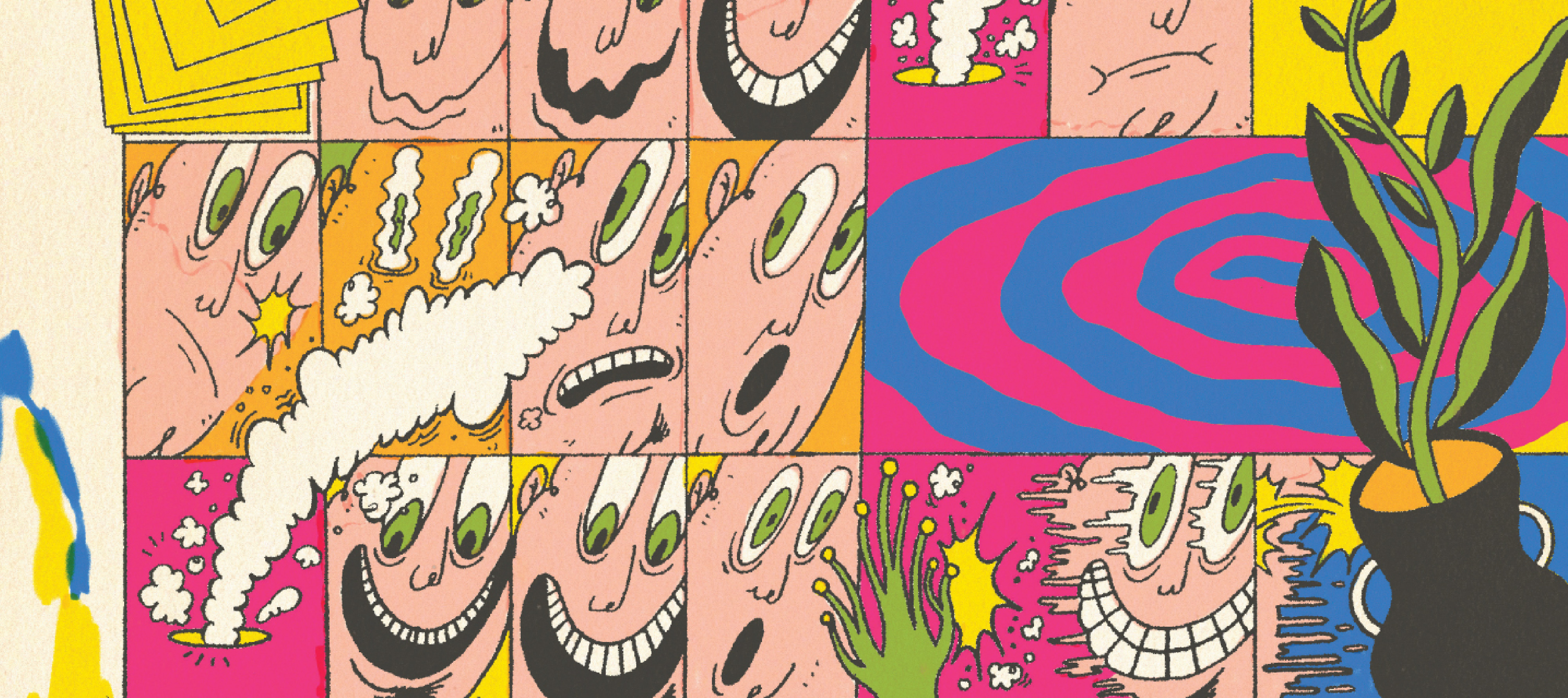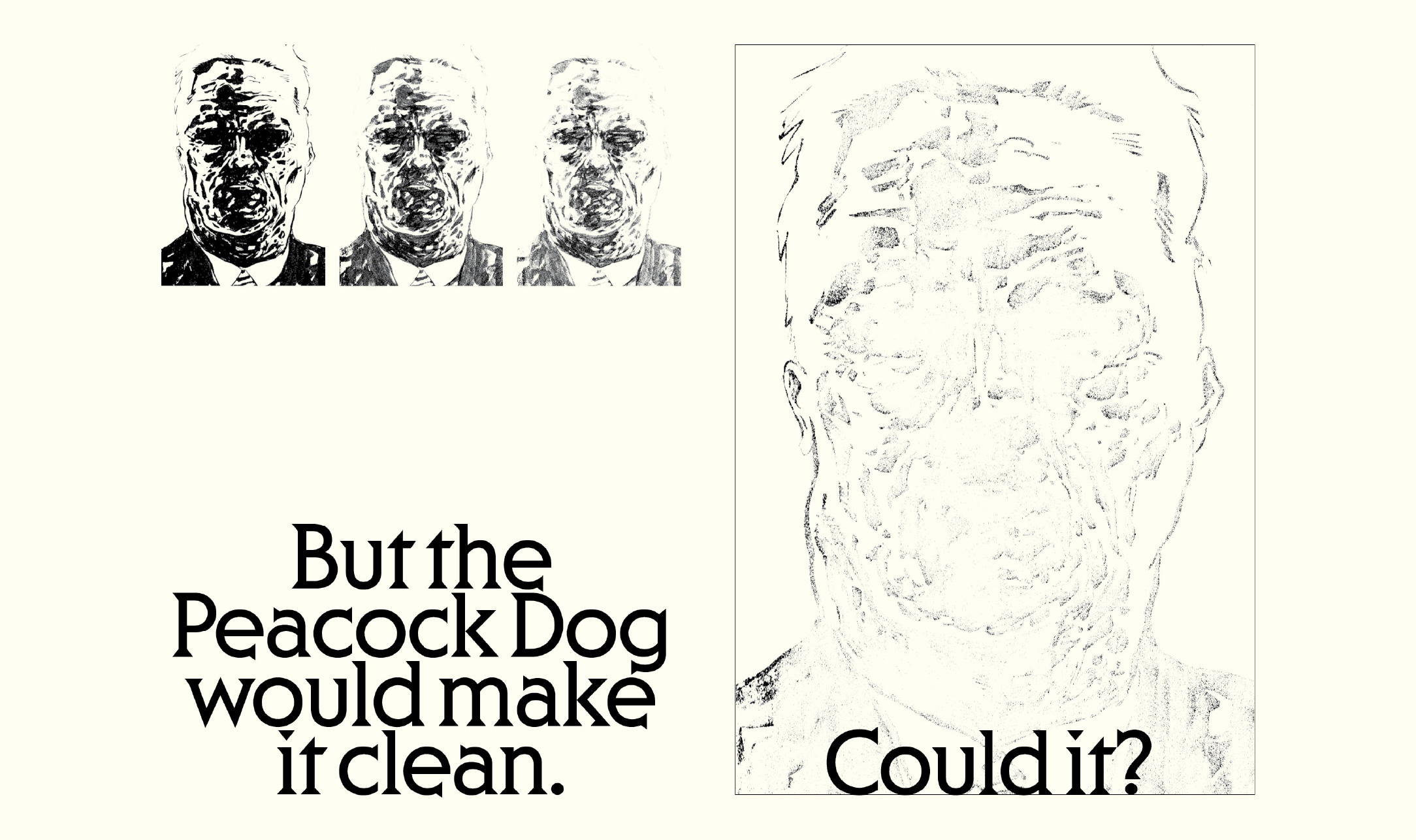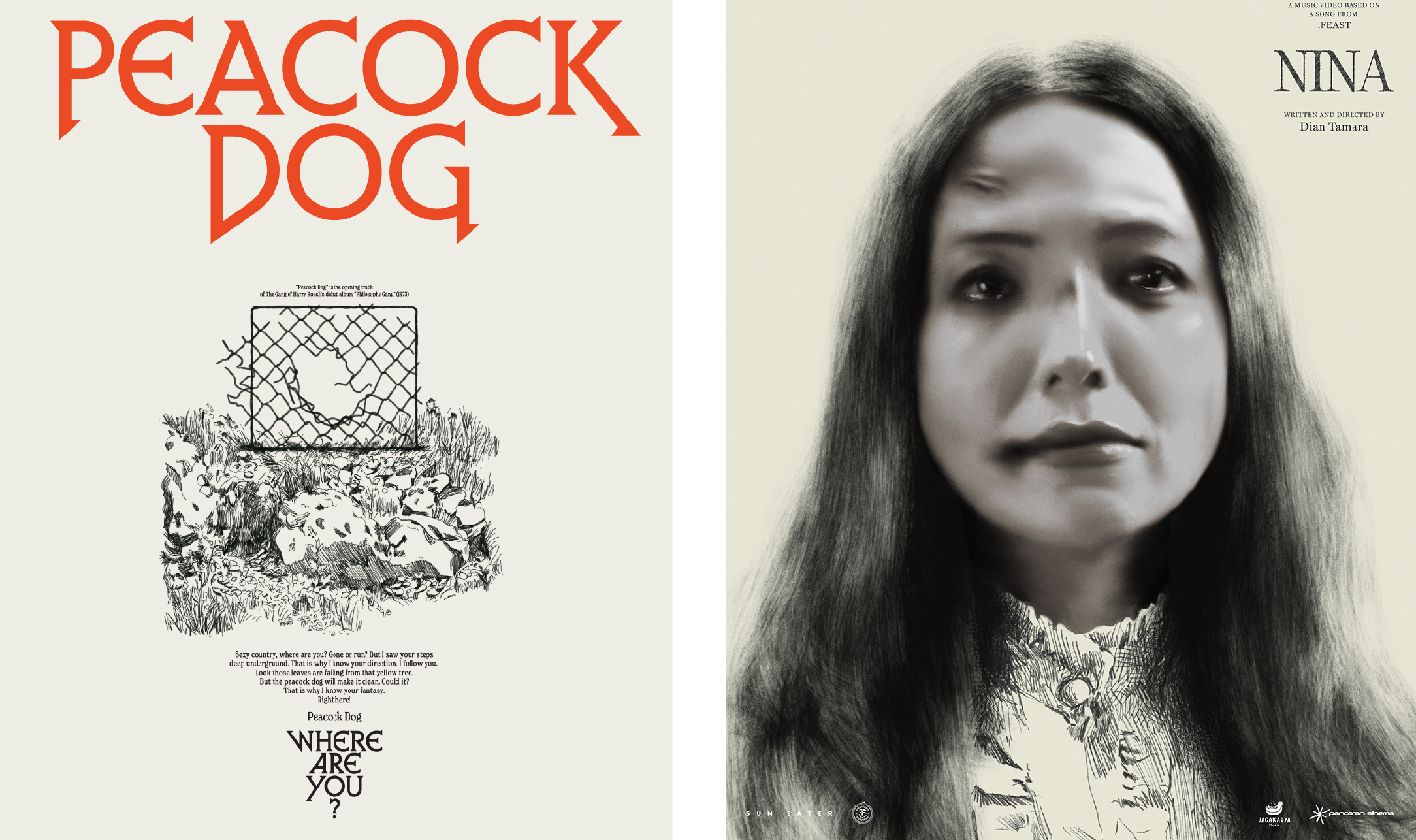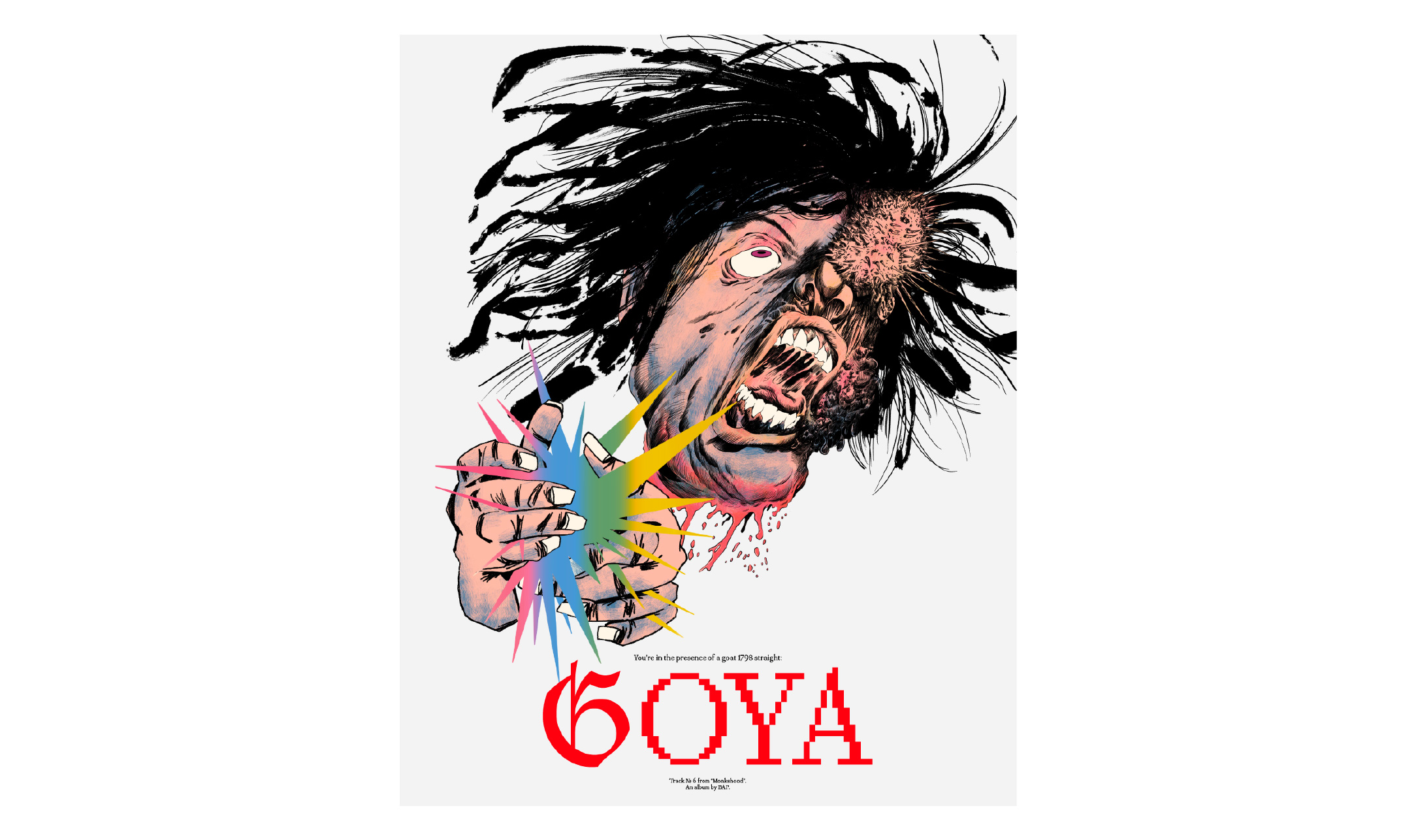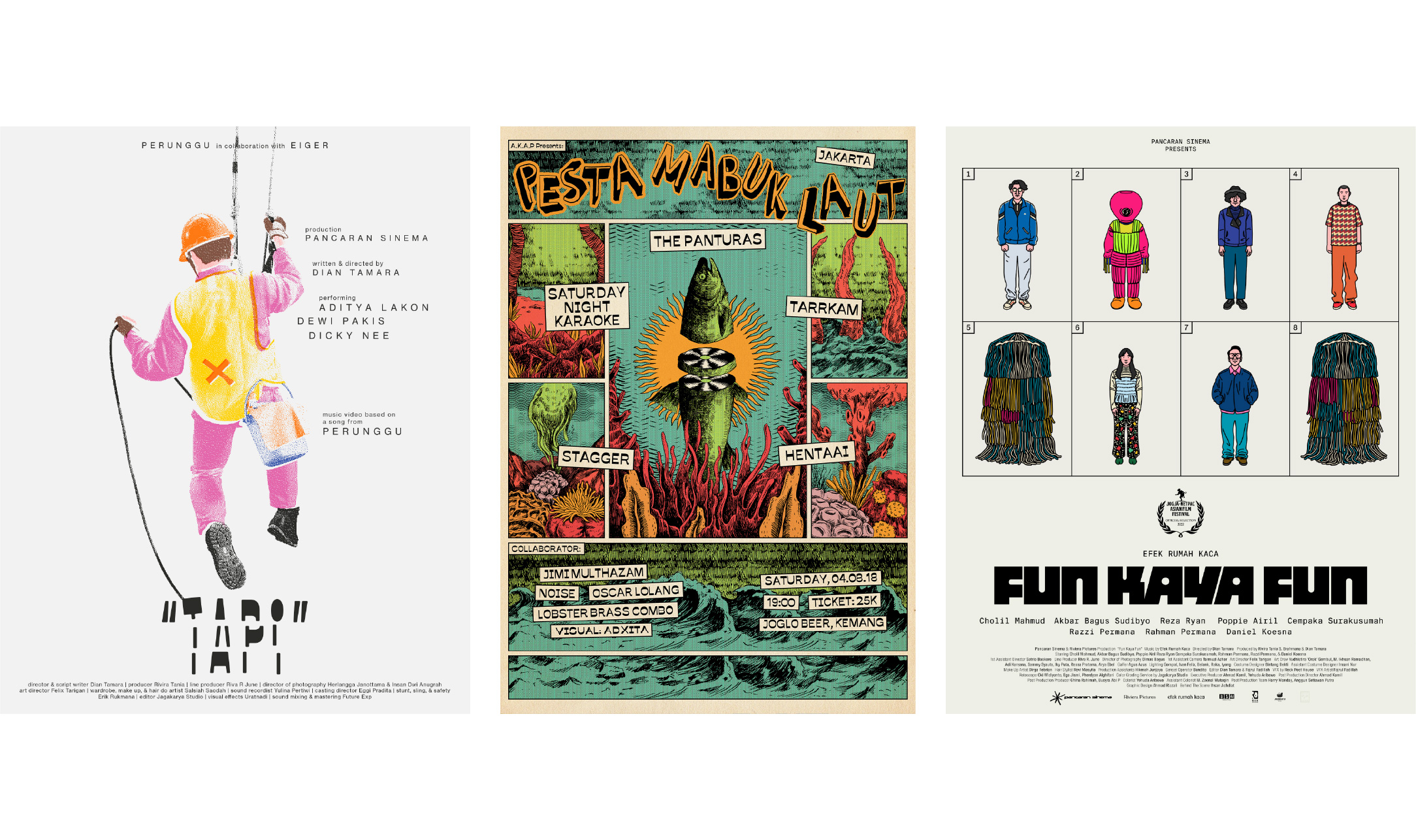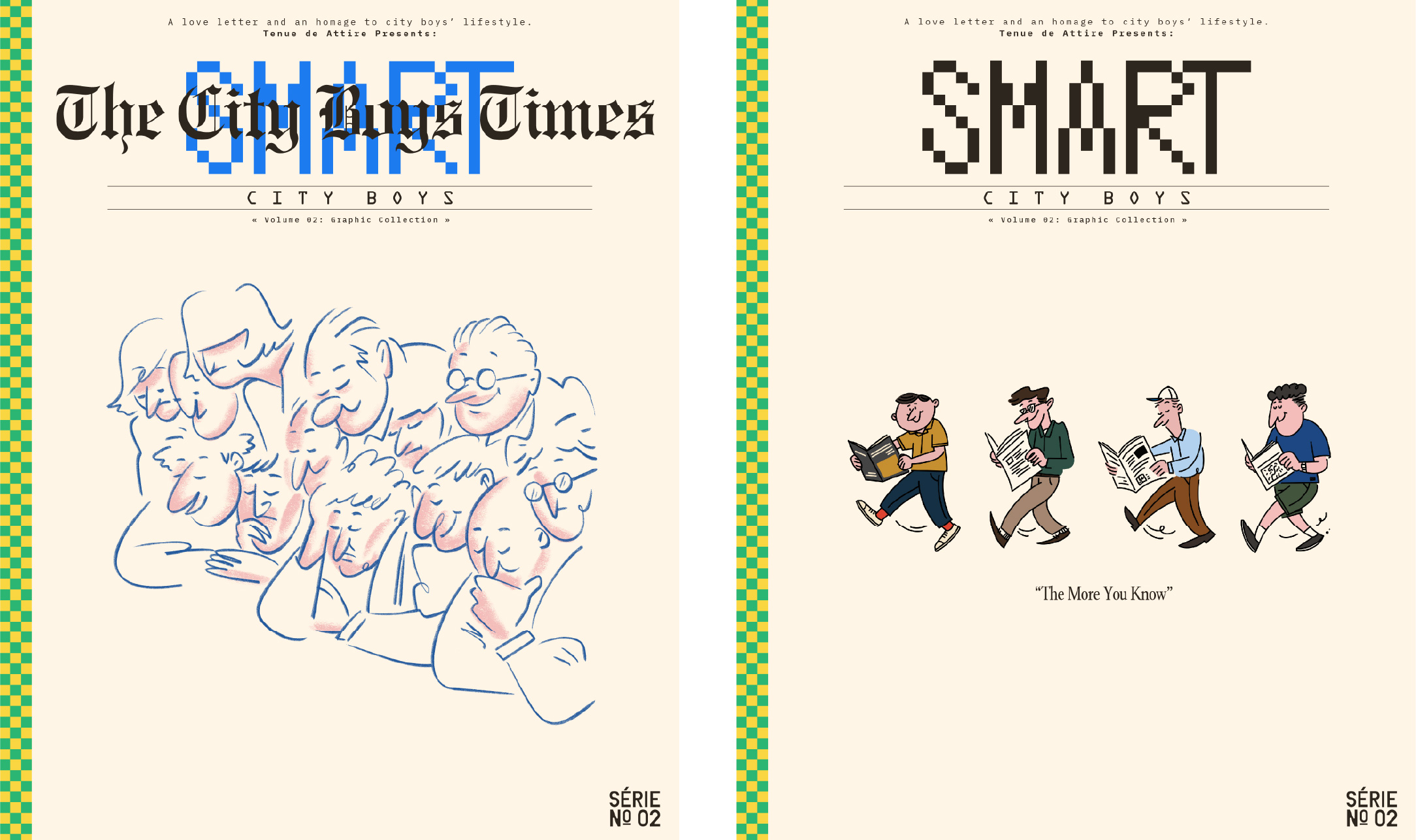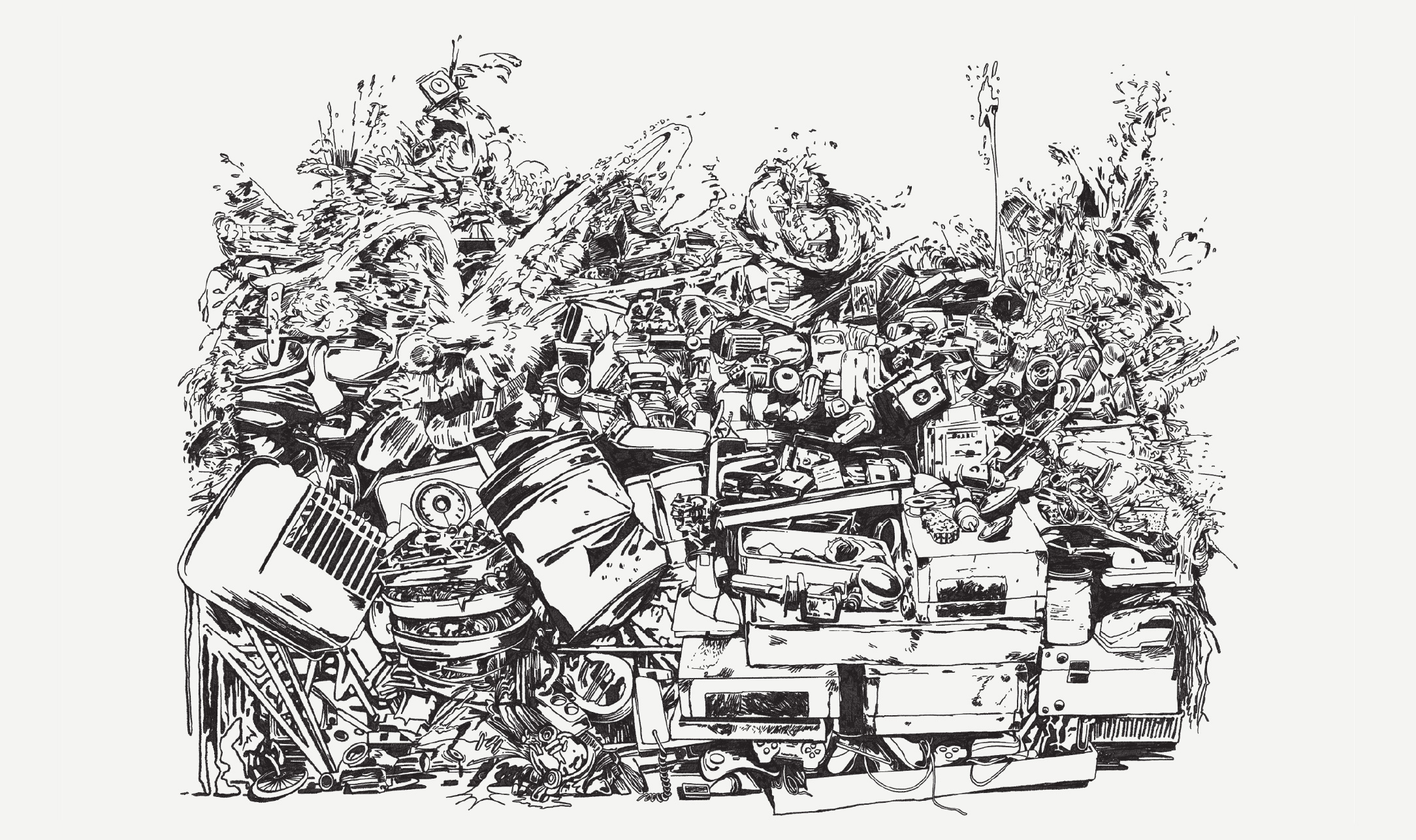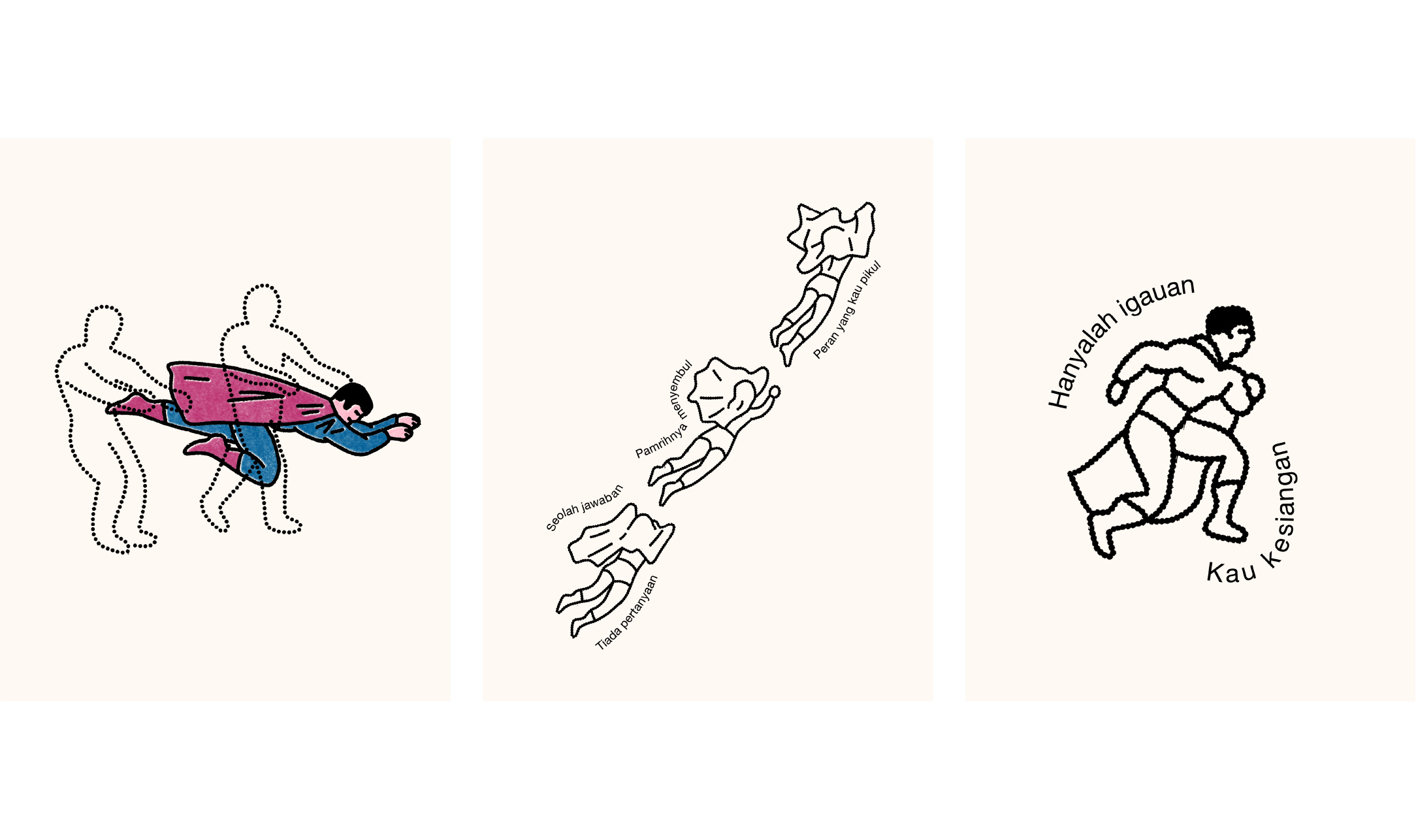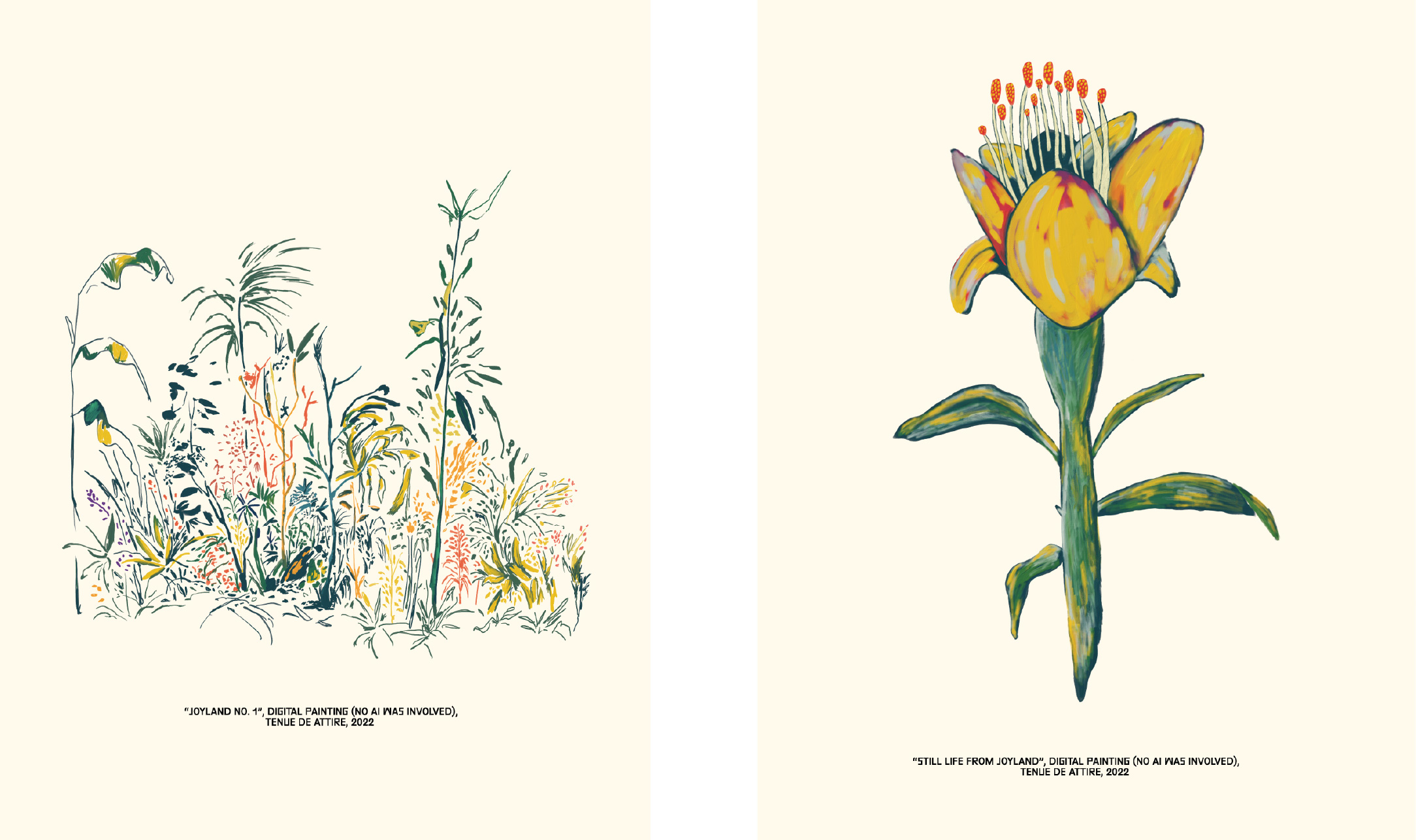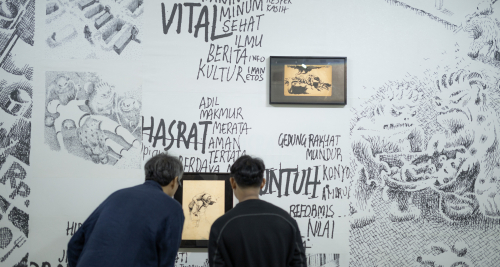Djali, Music, and Experimentation
Amid the buzz of the Jakarta Illustration & Creative Arts Fair (JICAF)’s opening on September 18, 2025, a stack of music posters caught our attention. Among the illustrators with their distinctive artistic styles, one booth stood out by offering a different kind of visual experience—each work seemed like a form of artistic experimentation, translating other forms of art within today’s pop culture sphere: music and film. Behind the booth was Djali, the illustrator who brought a fresh nuance to JICAF 2025. Grafis Masa Kini had the opportunity to visit the Pancaran Sinema office, the production house where Djali currently works, to sit down and talk with him.
Music has always been an essential element in Djali’s artistic journey. His career as a designer and illustrator began rather unexpectedly when he decided to participate in the poster competition for the experimental music event Thursday Noise. After first joining in Vol. 6, Djali won the following year in Vol. 7. “Because of that, I got into music. That experience opened up connections to the music scene,” he recalled. Even before that, Djali had already been involved in a music collective and was often tasked with creating gig posters for independent shows. To this day, Djali’s works remain closely tied to music.
Djali’s early visual career can be described as very manual and punk—a spirit that still resonates in the dynamic lines of his works today. He started with Chinese ink, experimenting with bold black graphics. “I was really inspired by punk bands. In terms of illustration, my very first reference was Raymond Pettibon, and over time the list has grown,” Djali explained. The accumulation of references has certainly influenced his artistic development, though his visual style remains deliberately “unfixed.” “From Chinese ink, I ventured into comics, then learned about design. That’s why, as time went on, my work started to look more organized.”
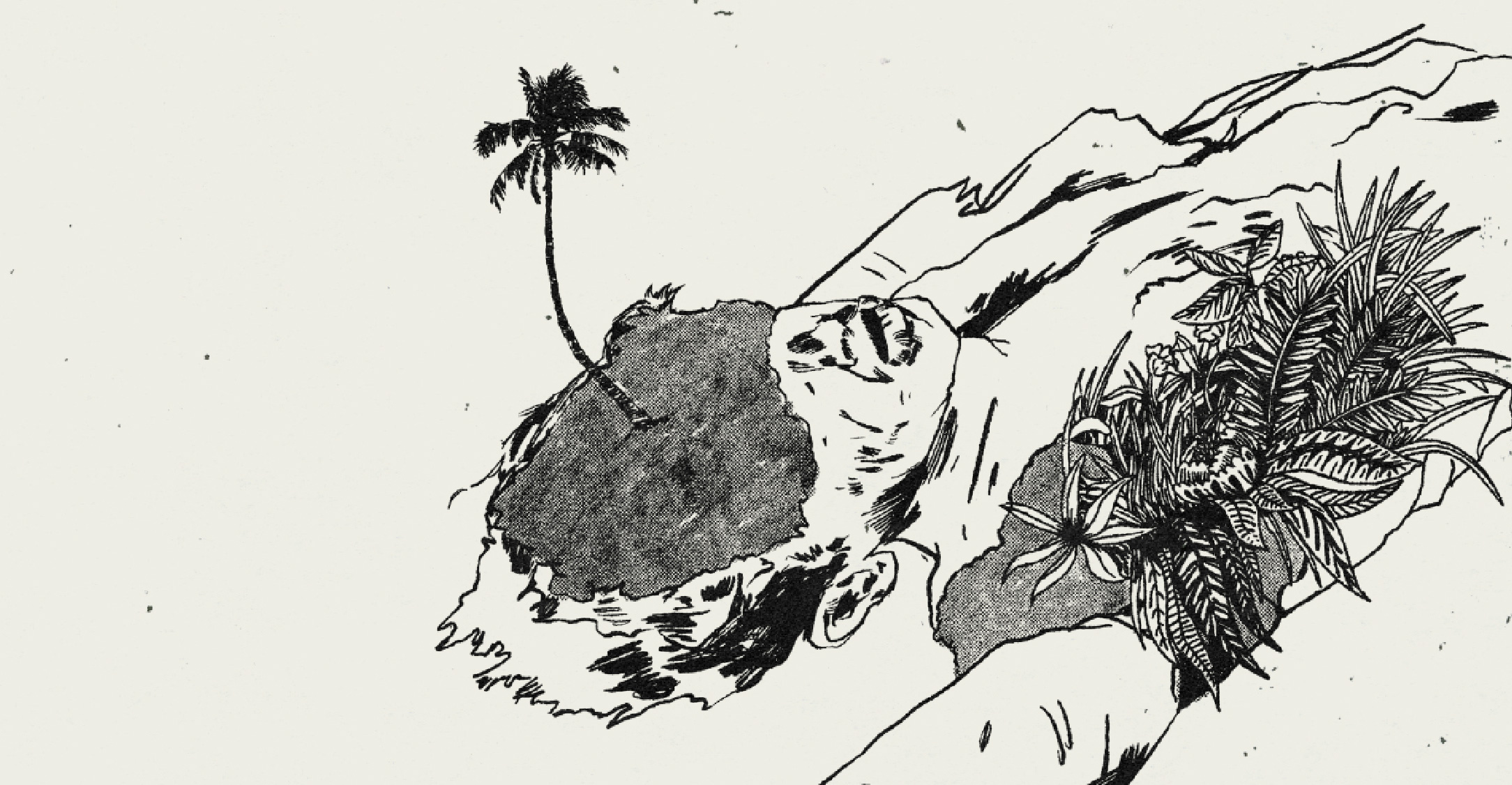
Design references also came from Djali’s time working at Tenue de Attire, one of Indonesia’s prominent fashion brands, where he worked as a product designer. Strong design elements can be seen in his more recent posters, where typography plays a prominent role, complementing his illustrations, with carefully composed objects within each frame. Beyond design, a personal shift also influenced his visual direction: becoming a father. “Since having a child, I feel a responsibility toward the audience. My work can still be full of anger, but in a more colorful way,” he said.
Despite the dynamic nature of his visual approach, one element Djali has never abandoned is his love for texture. Almost every piece of his work carries this thread, giving his output a distinctive character despite his versatility. “I get bored easily. I don’t stick to one style. Sometimes I wish I had a trademark style, but my friends often say what people actually choose me for is my potential—not a fixed aesthetic,” he reflected.
Djali’s playground has expanded since becoming involved in Pancaran Sinema, which he runs together with his wife, filmmaker Dian Tamara. His role is to direct the artistic side that often goes unnoticed in the film industry. “Production houses usually focus strictly on filmmaking. I saw opportunities in its derivatives,” he said. Observing the rapid growth of Indonesia’s local film industry, Djali laments the underdeveloped potential of its visual spin-offs. Coming from the music industry, Djali sees how music merchandise has grown, from posters to band T-shirts that we can see everywhere. He questions why the visual derivatives in the film industry are not as big as that.
One of Djali and his team’s early experiments was creating a flipbook based on a music video produced by Pancaran Sinema. Djali wanted to break the notion that the celebration of a film ends with its screening or with debates on social media. His biggest inspiration comes from A24, the American production company that has successfully built a cult following and turned its merchandise into highly coveted items akin to streetwear. “Imagine having a production house with a brand as strong as A24. They started a new movement. Who would have thought people would want to wear a cap with the name of a production house on it?” he said.
Fueled by his growing list of references, Djali admits that the hardest part of his creative process lies at the very beginning: imagining and contemplating ideas. Around 80% of his time is spent drafting concepts. The rest flows naturally once he finds the key. “It’s not that I’m stuck without ideas; it’s that I get overwhelmed with too many thoughts. Sometimes so many ideas come at once that I don’t know which one to use. So now I’ve trained myself to just execute first, and filter later,” he explained. When working on music-related projects, he always starts by listening to the songs. For him, music is the main entry point before gathering visual references, making alternative sketches, and narrowing them down to present to the client.
Among the many music-related projects in his career, one of the most memorable is his collaboration with the band Mocca. Djali was deeply involved in Mocca’s 25th anniversary rebranding project, which stretched across an entire year. The collaboration became a comprehensive artistic package led by Djali: from a refreshed identity to the live session film Life in Bloom, down to music releases divided across several campaigns. “I couldn’t have done it alone. Thankfully, I had help from many people. It really involved a lot of collaborators,” he said.
For Djali, the collaboration with Mocca stands as one of his most meaningful experiences, offering not only creative fulfillment but also valuable lessons. “The campaign had been running since last year, and the Life in Bloom EP was released in August. All the visual derivatives became one cohesive package. It’s one of the biggest projects I’ve ever worked on,” he reflected.
Even with his extensive experience collaborating with renowned musicians and his impactful role at Pancaran Sinema, Djali still harbors a personal desire to create a physical work entirely his own—not in response to music or film. That dream remains a goal for his future journey. For now, he says, he will continue to move forward step by step. His presence at JICAF 2025, he adds, is already a major step that has opened up new opportunities for him as an illustrator and designer.
Looking back, Djali’s journey appears like a zigzagging line. But perhaps it is this “uncertainty” and “dynamism” that defines his artistic style—elements that set him apart from other illustrators. With a career shaped by experimentation and a willingness to cross mediums, Djali proves that the role of an illustrator and designer can be boundlessly free—to keep learning, and to begin creating from anywhere.
Djali’s posters and other works can be found at the Jakarta Illustration & Creative Arts Fair (JICAF), which runs until October 5, 2025, at The Space, Senayan City, Jakarta.
